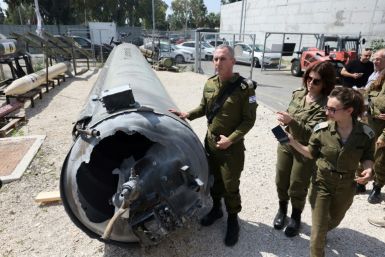UPDATE Typhoon Haiyan: Web Site Detailing Incoming Foreign Aid for Typhoon Victims Launched
The Philippine government has launched on Sunday a Web site which contains the details of the international aid the country has been receiving for the victims and survivors of super typhoon Haiyan (Yolanda).
Called the Foreign Aid Transparency Hub (FAiTH), the Web site can be accessed here - http://www.gov.ph/faith/.
"There's an urgent call now for us to monitor the movement of foreign aid funds for Haiyan (Yolanda) so they will go exactly where they're supposed to: to the survivors of the typhoon for whom recovery will be a long and arduous process, and to the communities that need to be rehabilitated as quickly and efficiently as possible," local news outlet GMA News quoted Richard "Bon" Moya, Department of Budget and Management undersecretary and chief information officer.
As of early Monday, a total of ₱11,654,775,900 (US$271,032,000.00) has been received, of which:
- ₱4,750,898,000.00 (US$ 110,486,000.00) was in cash;
- Non-cash was ₱2,085,887,000.00 (US$ 48,499,700.00);
- And pledged was ₱4,817,990,900.00 (US$ 112,046,300.00)
"Counter to what most people think, foreign aid isn't given to the Philippine government in hard cash. Instead, these arrive in the form of pledges, which are released to aid groups or their corresponding organizations in the Philippines, such as USAID and Red Cross. In cases like this, FAiTH doesn't monitor these funds; instead, it tracks foreign aid that is coursed through Philippine government agencies," Mr Moya said.
All the countries that pledged assistance from the U.S. all the way to Bangladesh are listed in the Web site. Its format is somewhat like a tracer method. Up-to-date statuses concerning each pledge are given for readers to read and keep track.
Before Typhoon Haiyan struck the central Philippines, the country was at that time enmeshed with the Senate proceedings concerning the alleged mastermind of a massive government scam.
Ever since the first international aid was pledged, Filipinos around the world had cautioned the government the incoming funds should be used properly and solely for the victims and survivors of the natural disaster.
Read: UPDATE: 2,357 Current Death Toll from Super Typhoon Haiyan (Yolanda); World Unites, Responds to Philippines' Call of Mercy (Photos)
"FAiTH is the Aquino administration's pioneering response to this growing need for transparency and accountability in the management of humanitarian donations," Mr Moya said.
Read more:
UPDATE: Philippines Releases Official List of Typhoon Haiyan (Yolanda) Casualties
Philippines Expects Economic Growth Curbed by Typhoon Haiyan/Yolanda |






